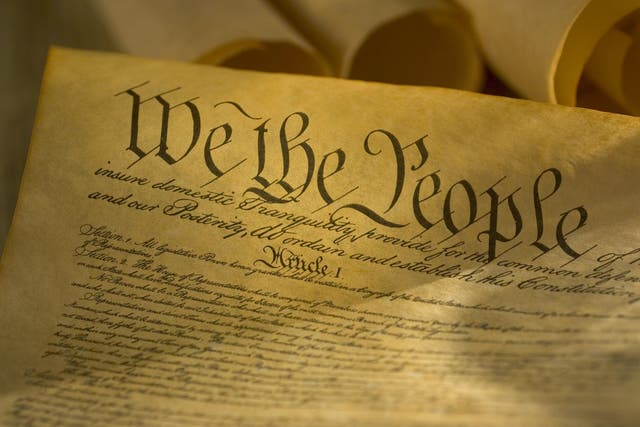

The U.S. Constitution, written in 1787 and ratified by nine of the original 13 states a year later, is the world’s longest-surviving written constitution. But that doesn’t mean it has stayed the same over time.
The Founding Fathers intended the document to be flexible in order to fit the changing needs and circumstances of the country. In the words of Virginia delegate Edmund Randolph, one of the five men tasked with drafting the Constitution, the goal was to “insert essential principles only, lest the operations of government should be clogged by rendering those provisions permanent and unalterable, which ought to be accommodated to times and events.”
Since the Bill of Rights was adopted in 1791, Congress has passed just 23 additional amendments to the Constitution, and the states have ratified only 17 of them. Beyond that, many changes in the American political and legal system have come through judicial interpretation of existing laws, rather than the addition of new ones by the legislative branch.
One of the biggest early criticisms of the Constitution was that it did not do enough to protect the rights of individuals against infringement by the nation’s new central government. To remedy this, James Madison immediately drafted a list of rights for citizens that the federal government did not have the power to take away. Included in this Bill of Rights were freedom of religion, speech and of the press, the right to bear arms, the right to a trial by jury and freedom from unreasonable searches and seizures.
The Constitution stated that the runner-up in the presidential election would become the vice president—a system that nearly sparked a constitutional crisis in 1800, when Thomas Jefferson and his running mate, Aaron Burr, received the same number of electoral votes. The 12th Amendment, ratified in 1804, mandated that electors vote separately for president and vice president.
More than a century later, the 17th Amendment similarly changed the election process for the U.S. Senate, giving the American people—rather than state legislatures—the right to elect senators.
WATCH: The Supreme Court
In comparison to its treatment of the executive and legislative branches of government, the Constitution itself remained relatively vague on the role of the Supreme Court and the judicial branch, leaving its organization largely up to Congress.
It was John Marshall, the nation’s fourth chief justice, who established the power of the Court by asserting its right to declare acts of Congress unconstitutional. “It is emphatically the duty of the Judicial Department to say what the law is,” Marshall wrote in the landmark case Marbury v. Madison (1803). Since then, the Court has taken an increasingly active role in interpreting the laws made and actions taken by the other two branches, and ensuring that both abide by the Constitution.
At the time the Constitution was written, individual state governments were more powerful than the new nation’s central government. That balance of power quickly changed over the years, as the federal government expanded and took an increasingly dominant role.
Federalism became the law of the land thanks to Supreme Court decisions like McCulloch v. Maryland (1823), which affirmed the federal government’s right to take actions “necessary and proper” to meet the urgent needs of the nation.
Debate over the issue of states’ rights continued up to (and beyond) the Civil War, when the Union victory and the dawn of Reconstruction marked the beginning of a new expansion of federal power. Passage of the 16th Amendment in 1913 gave the government the power to collect income tax, a change that effectively reversed the prohibition against a “direct tax” included in Article I of the Constitution.
In the Civil War’s aftermath, three “Reconstruction Amendments” sought to more fully realize the founders’ ideal of all men being created equal. While the 13th Amendment abolished slavery in the United States, the 14th Amendment extended the status of citizens to African Americans, contradicting the Supreme Court’s ruling in Dred Scott v. Sandford (1857).
The 15th Amendment ensured voting rights to Black men (although Southern states would soon find ways to restrict those rights). In 1920, after ratification of the 19th Amendment gave voting rights to all American women for the first time, suffrage leader Carrie Chapman Catt memorably declared that “To get the word ‘male’ in effect out of the Constitution cost the women of the country fifty-two years of pauseless campaign.”